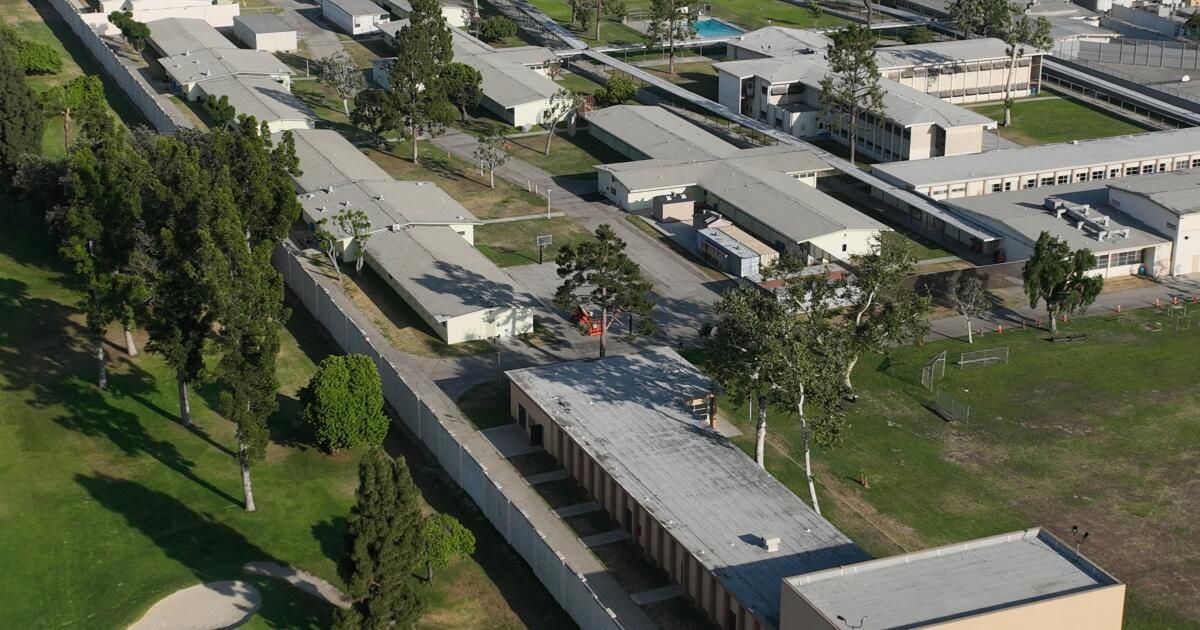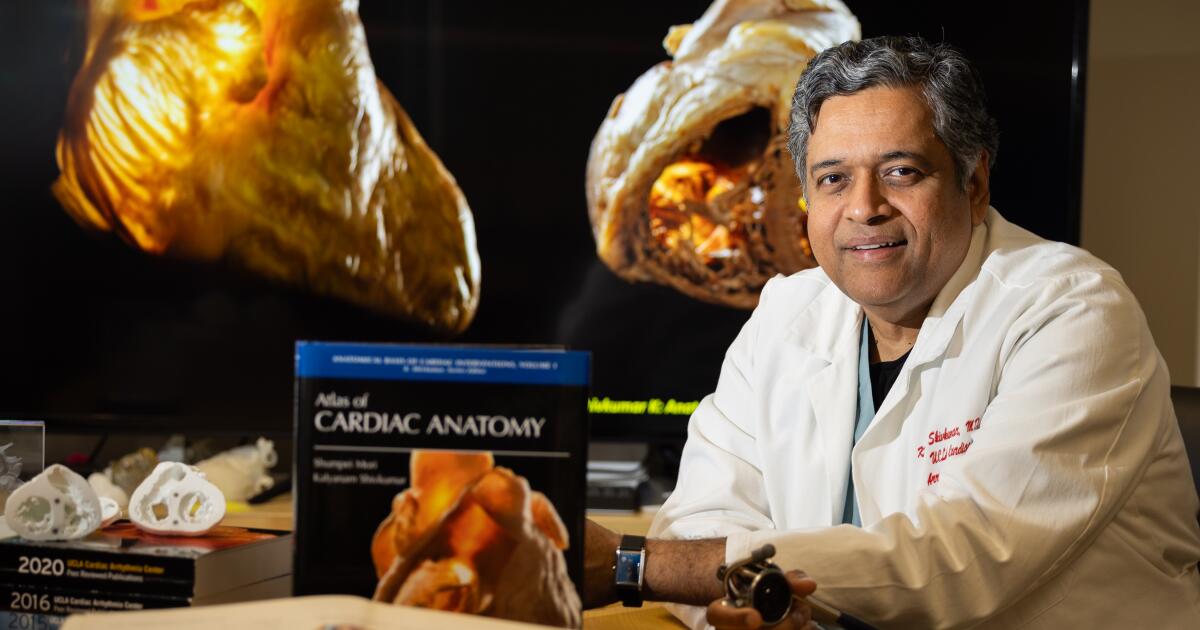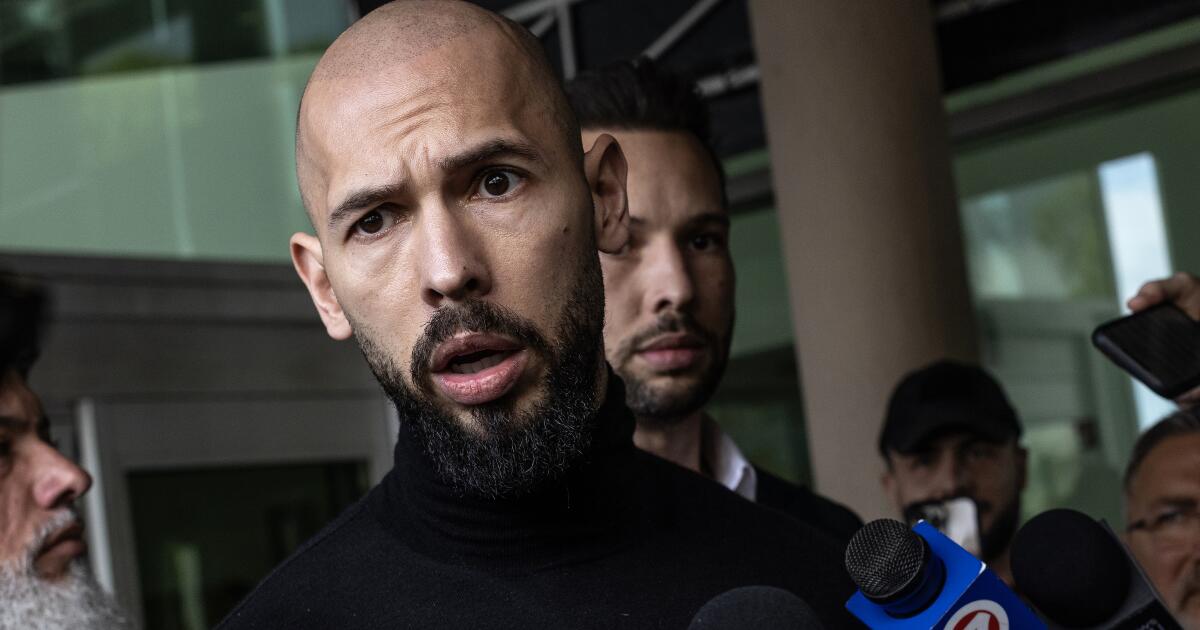A state oversight board could vote Thursday to close the Los Padrinos Youth Center in Downey if it deems it inadequate to hold youths accused of crimes. It's a maddeningly familiar situation.
Los Padrinos closed in 2019 after a long history of safety and oversight failures. But the Los Angeles County Probation Department returned it to service last year after the Board of State and Community Corrections found that the county's two remaining facilities, the Central Youth Center in Lincoln Heights and the Barry Youth Center J. Nidorf in Sylmar, were not eligible (except for a part of Nidorf over which the board had no jurisdiction then, but does now).
The measure did not improve the conditions of the county's young wards. In the nearly nine months since Los Padrinos reopened its doors, there have been escapes, drug overdoses, lock-ins, attacks on staff and beatings, reportedly including a fight organized by staff members who are supposed to keep the teens safe. A young man from Nidorf died of an overdose.
The county are treating their youth charges like peas in one of those sleight of hand games where unwitting players keep checking under the wrong shell. For example, two years ago the Probation Department attempted to thwart a state inspection of Nidorf by rapidly busing all of its minor residents to Central. He made them back away once the inspectors left. The ploy only delayed the inevitable closure.
Guillermo Viera Rosa was a member of the state board at the time and resigned to become the director of probation for Los Angeles County. If someone could figure out how to get the Probation Department to finally meet the board's standards, surely he could.
There is no doubt about Viera Rosa, but she can't, because no one can. Emptying Central and practically emptying Nidorf and moving the young residents to The Godfathers was just another game of tricks that has now been exposed. No juvenile detention facility operated by the Los Angeles County Probation Department can consistently meet the needs of troubled youth. The next step is unclear.
The state board inspects buildings, but the problems are not with the walls, wiring or pipes. They are in the department that manages them and in a succession of employment agreements, employment practices and civil service rules that block change. Due to organizational dysfunction dating back three decades, the department has a huge payroll but very few employees who actually show up to work to provide security, education and rehabilitation. It also has a variety of virtually empty juvenile probation camps. Last year, the county gave away one of them. Free.
The dysfunction also means the department cannot keep the minors in its care safe. Fights were common at several now-closed probation camps in the 1990s and early 2000s. Lawsuits allege rape and sexual relations between staff and wards at many facilities, including Los Padrinos.
Over the past quarter century a succession of probation chiefs have been hired who promised to change the culture, but they soon resigned or were run out of town by probation workers.
Viera Rosa was probably surprised to discover how deep the department's problems run. Last week she asked her former state board colleagues for more time to whip the department into shape.
That would make sense if the problems traced back only to the beginning of the pandemic, or to the state's ill-considered program to close its Juvenile Justice Division so that counties would no longer have anywhere to send their most difficult cases. But fixing the Probation Department's misconduct and disorder has been on the county's to-do list since at least the 1990s.
The situation recalls one of the county's most spectacular disasters: the collapse of the Martin Luther King Jr./Drew Medical Center, appropriately nicknamed “Killer King.” The Board of Supervisors ignored signs of staff misconduct and patient mistreatment for years. When the supervisors got serious about solving the problems, dysfunction was already assured and no reorganization, layoffs, retraining or new directors could save the hospital.
They also failed to protect patients who came seeking medical care, but instead died or were seriously injured because vital signs were missed, medications were administered incorrectly, emergency rooms were left dirty, and resident doctors were left unsupervised. The hospital failed inspections by the U.S. Centers for Medicare and Medicaid Services, but federal authorities feared the political ramifications of its closure. But in the end there was no other option: funding was cut and the medical center closed in 2007.
The current juvenile probation crisis is alarmingly similar to the King/Drew crisis two decades ago. He has wasted his second, third and twentieth chance. Not only is it failing to rehabilitate troubled youth (which is its only reason for existing), but it is actively harming them. It still stands because no one has figured out who would be responsible for the hundreds of youth if the county's youth facilities are declared inadequate.
If there is a secret contingency plan, it is time to make it public. And if there isn't one, the county and state better hurry up and make one. This shell game has to end.












